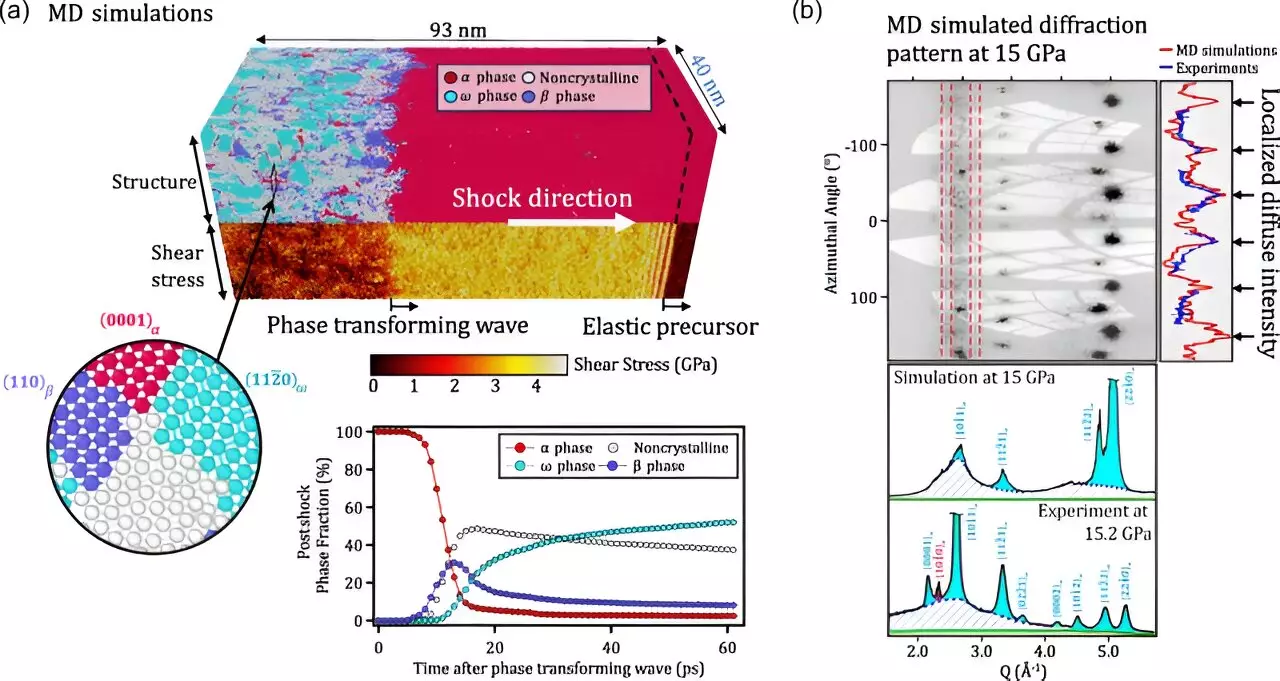

In the ever-evolving landscape of technology, materials play an indispensable role, especially in applications that encounter harsh conditions such as nuclear energy systems and military gear. The intricacies of these materials under extreme environmental stresses are critical for advancements that lead to more efficient, resilient, and cost-effective solutions. An accurate comprehension of the atomic behaviors occurring at the lattice level when subjected to intense pressures and temperatures is fundamental in this endeavor.
Researchers at the Lawrence Livermore National Laboratory (LLNL) have made groundbreaking strides in understanding the deformation characteristics of zirconium, a metal frequently employed in critical applications such as nuclear reactors and aerospace engineering. Through rigorous experimentation, LLNL scientists compressed single-crystal samples of zirconium under substantial pressure, observing that the material exhibited unforeseen and intricate deformation patterns. Their work, which features prominently in respected journals like Physical Review Letters and Physical Review B, provides fresh insights into the behavior of metals under stress.
Materials under stress have a repertoire of mechanisms to alleviate shear stresses, such as dislocation slip and crystallographic twinning. However, zirconium’s unique behavior under compression is particularly noteworthy. Unlike many metals that deform primarily through dislocation movement along specific crystallographic planes, zirconium’s crystal structure transforms with increased pressure, introducing a layer of complexity to its deformation characteristics. Lead researcher Saransh Soderlind emphasized the importance of unraveling these microscopic mechanisms, underscoring their critical role in generating predictive models for material performance under extreme conditions.
To capture the behavior of zirconium at high pressures, the research team utilized advanced experimental techniques, specifically femtosecond in-situ X-ray diffraction. This innovative approach allowed them to observe zirconium’s atomic behavior over remarkably short timescales. The researchers stumbled upon atomic disorder—a phenomenon not previously documented in elemental metals—alongside multiple pathways for crystal structure transformations. This unprecedented discovery laid the groundwork for a deeper understanding of the complex interactions that occur during deformation, indicating that such atomic phenomena might be commonplace in various materials when exposed to substantial pressures.
The implications of this research extend well beyond zirconium alone. As the findings suggest, the nuanced interplay of atomic movements under extreme conditions could redefine how scientists approach materials science in general. With zirconium alloys traditionally valued for their strength and low neutron absorption in nuclear applications, enhanced understanding of their behavior opens doors to developing next-generation materials that might also catalyze advancements in other extreme environments. LLNL scientist Raymond Smith remarked on the rich tapestry of atomic movements revealed by this study, suggesting a similar complexity could be found in numerous other materials under comparable stresses.
As we look to the future, the insights gained from studying zirconium reveal a broader understanding of material behavior under extreme conditions, fostering innovation in the development of advanced materials tailored for some of the world’s most demanding applications.
In the realm of software development, the ability to swiftly and accurately address bugs is…
The realm of quantum computing and communication is not just an abstract dream anymore; it…
In a remarkable leap for the field of material science, a collaborative research initiative has…
Throughout Earth's vast history, our planet has endured five major mass extinction events that reshaped…
Rainfall is a vital element of our planet’s hydrological cycle, yet many aspects of its…
On a night when the universe aligns, a mesmerizing phenomenon awaits: the appearance of the…
This website uses cookies.